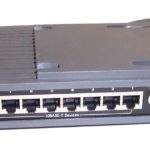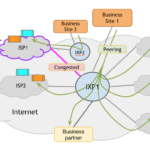So one day, after attending a Mikrotik User Meeting in Indonesia, i had a chance to have a talk with an employee of a retail company in Bandung. H told story about a network implementation project on his company, where they put Mikrotik as main router to forward traffic between internal networks, and the networks were created with the help of VLAN technology. ok sound cool so far… he then continued confidently “we use a cool layer-3-switch that makes our network stable”.
“ok” i nodded, “so what did you configure on your fancy layer-3 switch”, i replied.
and he said, “well, we configure VLANs there, and route the traffic using our mikrotik router” (that means he just configured the layer-3-switch for VLAN only. all traffic between network or inter-VLAN traffic will be routed on Mikrotik Router).
“WHAT? if you just use VLAN only, why did buy the expensive layer 3 switch?” i replied.
“well, we buy the switch because it supports layer-3 and it has other functions as well” he said.
“oh my god… i think this guy was just tricked by sales person, looks like he doesnt really know what layer-3 switch is“. Yes, i would like to say congratulations for C**** sales guy for persuading this gentlemen to buy the products confidently with more money. This article is talking about Do you really need a layer 3 switch? don’t have to be tricked by sales guy…
In order to understand this article, you need to understand how switch works, how vlan works, and an example of vlan routing.
So, what is layer-3 switch?
It is a switch that can be turned into a router. Therefore, the inter-vlan routing can be done without router, just by the switch itself. see picture below:
Any examples?
Mikrotik CRS, cisco catalyst (layer-3 model), other vendors
Drawbacks?
In this example, we talk about layer 3 switch from C****. The drawbacks are:
- Layer 3 switch is expensive. Most likely people use layer 3 without using its routing function. Whats the point of buying a layer 3 switch while inter-vlan routing still being done by router?…
- Low routing performance. Many vendor designed a switch as layer-2 devices, therefore the packet processing and routing capability is generally lower compare to dedicated router. example: routing table lookup, supported routing protocol, etc
- Lack of WAN support. like PPPOE authentication. therefore we still need a dedicated router for interVLAN routing
- Lack of authentication features. for example: PPPOE authentication, or hotspot authentication. we still need a dedicated router to do the function.
Conclusions
- C**** layer 3 switch has made an innovation by combining layer 2 and layer 3 device -> layer 3 switch
- the most distinguish feature of layer 3 switch is its routing capability
- Unfortunately, in the implementation, the routing function on the switch is often not used because routing task is done by dedicated router
- You can save more money by using products from other vendor which produces managed switches.
Thank you for reading










